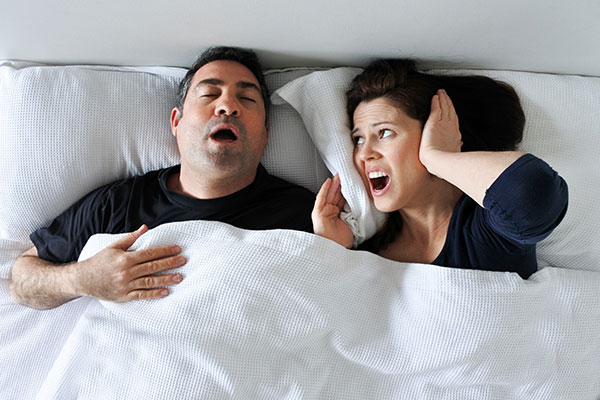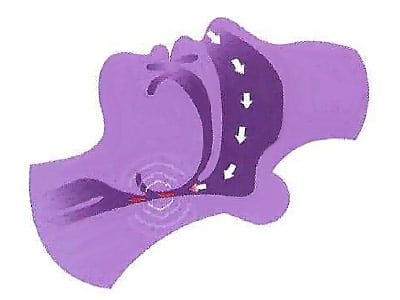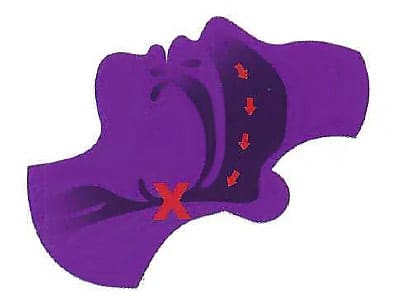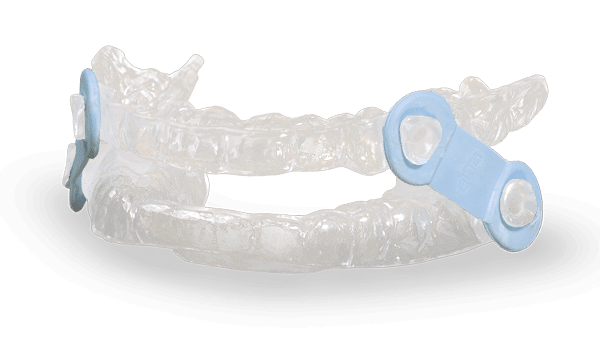
Untreated snoring often worsens over time and may develop into OSA. Complications may include:
Between the ages of 30 and 70, 34% of men and 17% of women have Obstructive Sleep Apnea (OSA).
These conditions share a common physical cause during sleep, the muscles relax and partially close the upper airway located behind the tongue (pharynx). Breathing effort is required to open the airway causing vibration of the soft tissues of the throat.
59% of adult men snore
46% of adult women snore
54% of couples are affected by snoring

Vibration of the tongue and soft tissues caused by partial collapse of the airway.

Partial or complete obstruction of the airway caused by soft tissue collapse.
Chronic snoring is associated with a decrease in oxygen in the blood which tires the heart. Sometimes brief unconscious arousals (micro-arousals) occur which interrupt restful sleep. The sound can be as loud as the sound of a truck.
Treating your snoring and OSA will improve your quality of life and help prevent serious health problems. If you snore on a regular basis, your dentist or doctor can help you get diagnosed.
A simple test can be done in a sleep center or at home to assess the seriousness of the problem. Depending on the diagnosis, you may be given a prescription for the appropriate treatment.
» Lose excess weight
» Exercise
» Avoid alcohol and sleeping pills
» Sleep on your side
» Quit smoking
A MAD is a dental appliance that holds your lower jaw (mandible) slightly forward as you sleep. This keeps the airway open by pulling the tongue and soft tissues forward.
You wear a mask over your nose and/or mouth connected to a machine that delivers a constant flow of air to keep your airway open. CPAP is the most common treatment for OSA, however many patients cannot tolerate it.
Usually only an option after other treatments have failed. However, for a small number of people with certain jaw structure problems, it’s a good first option.
Custom MADs are a convenient. immediate, and non-invasive treatment option to improve airflow and reduce vibration (snoring) and airway closures (apnea). Their effectiveness has been demonstrated by numerous case studies.
The treatment of snoring and OSA with mandibular advancement devices can be managed by your qualified dentist.
Custom-made MADs are recommended for:
» Snoring without OSA
» Mild to moderate OSA
» Severe OSA when the patient cannot tolerate CPAP
